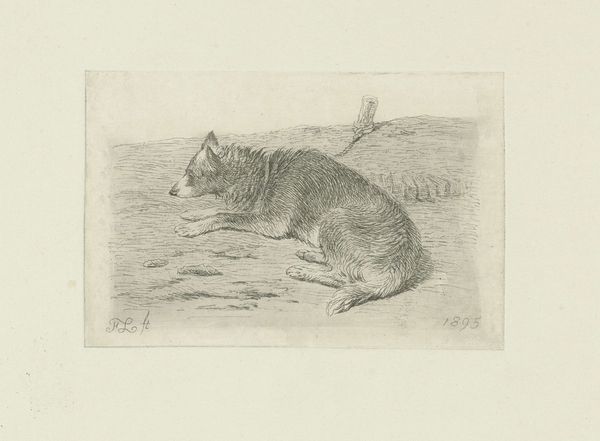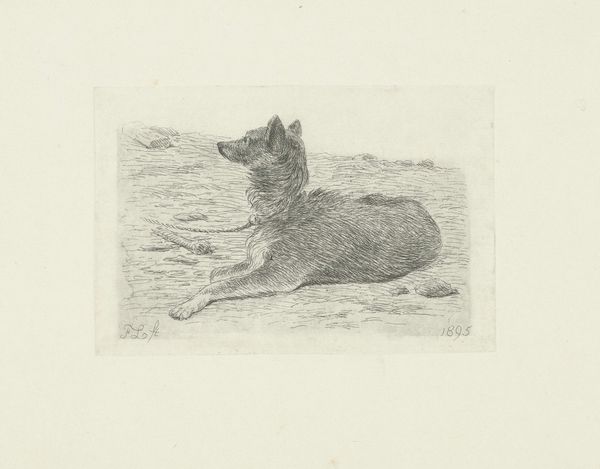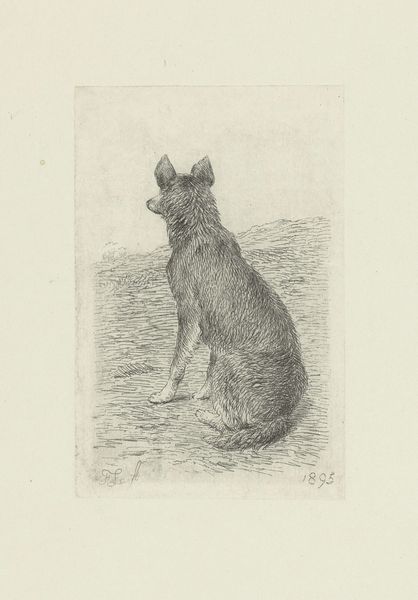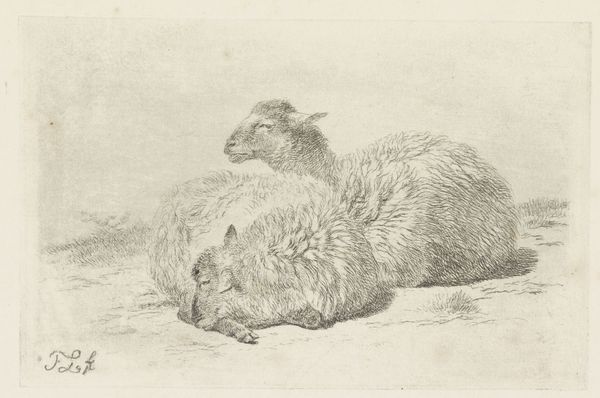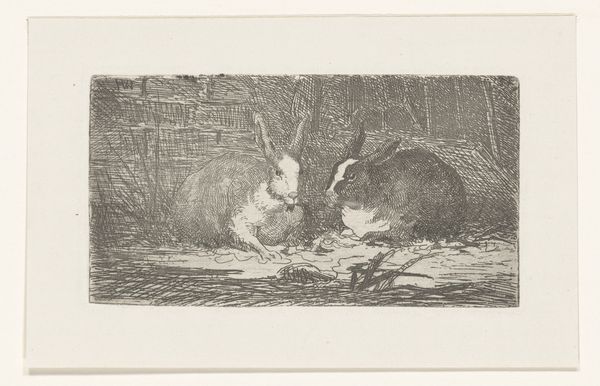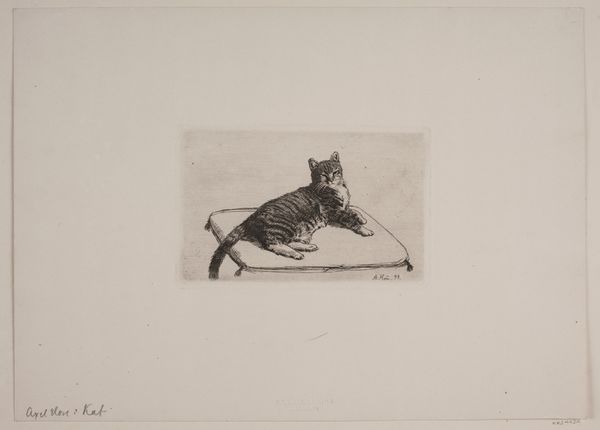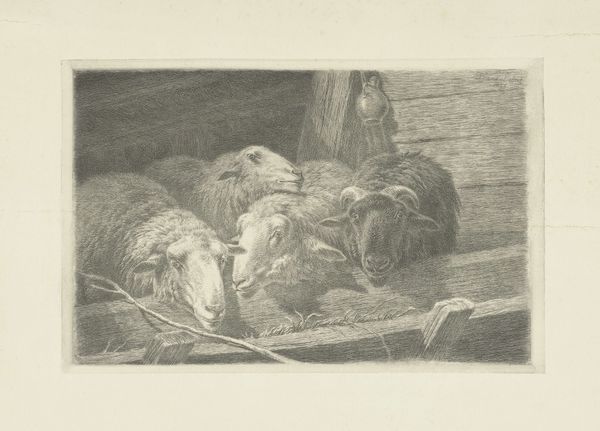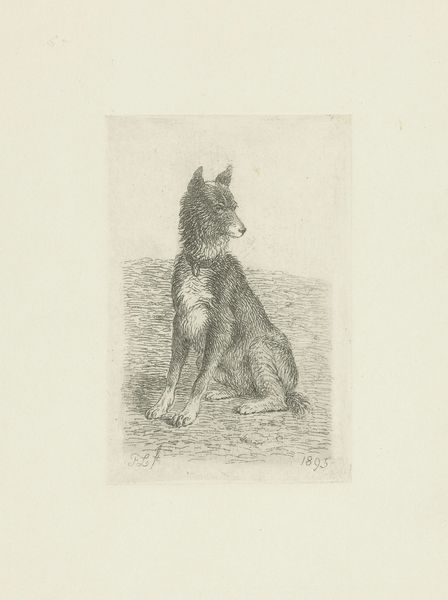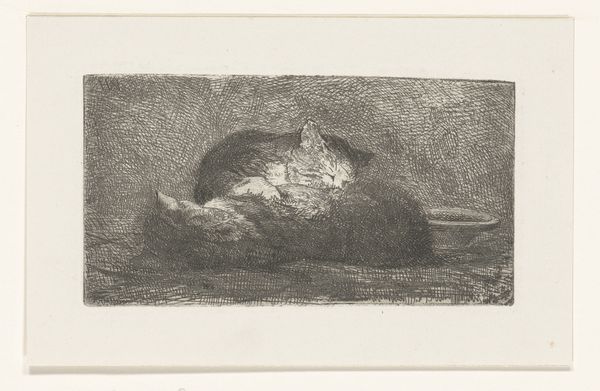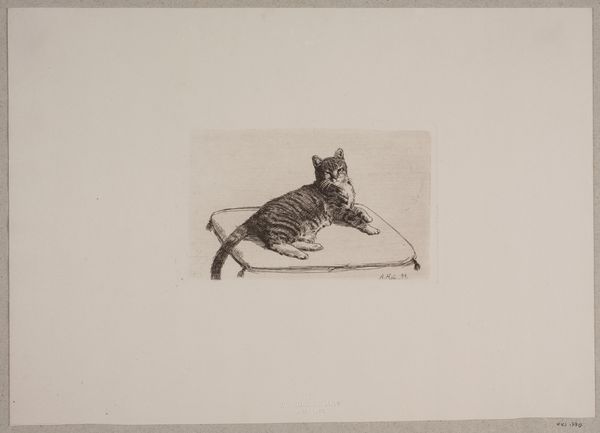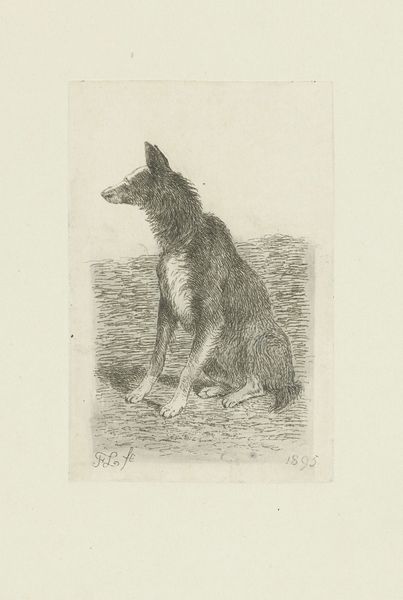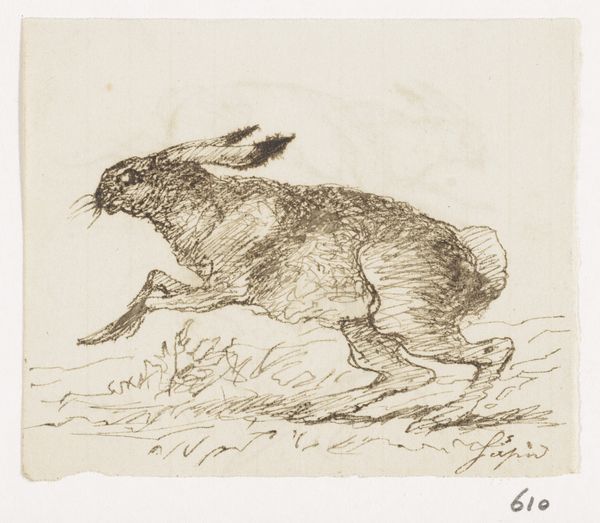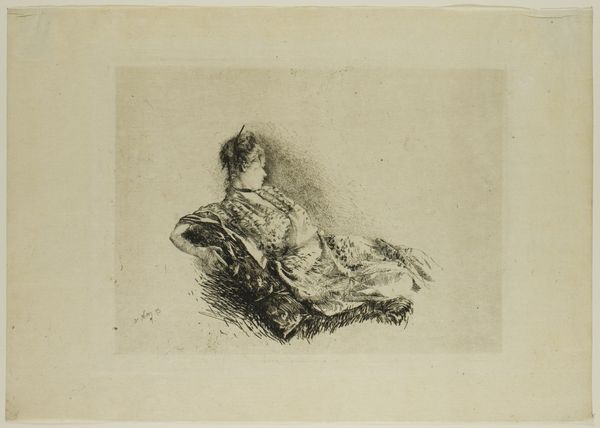
drawing, pencil
#
pencil drawn
#
drawing
#
animal
#
pencil sketch
#
dog
#
landscape
#
pencil
#
sketchbook drawing
#
realism
Dimensions: height 120 mm, width 79 mm
Copyright: Rijks Museum: Open Domain
Curator: This is a pencil drawing from 1895 by Frans Lebret, titled “Liggende hond van achter gezien”—which translates to "Lying Dog Seen From Behind". Editor: It feels… melancholic, doesn't it? The dog's turned back, the muted palette, the spare surroundings; it speaks to a kind of lonely simplicity. Curator: Absolutely. And Lebret was working during a time of immense social upheaval in Europe, including the rise of industrial capitalism. Artists often used the animal form as a way to comment on marginalization or alienation, especially among working-class communities displaced by factories or new economic systems. This may speak to a loss of simpler agrarian life. Editor: I’m struck by the composition itself— the curve of the dog's back echoes the bowl beside him, creating a visual rhyme that hints at domestication, yet the rough marks that define the dog also recall something untamed. Is this then a statement of our contradictory, changing relationship with the natural world at the time? Curator: Potentially, and I appreciate you spotting the symmetry between animal and vessel. Think too, about the other forms present: we see a rudimentary, yet visible leash and bone nearby. It’s interesting to consider whether the image offers us visual symbols which represent a dialogue surrounding freedom, servitude and societal nourishment? Editor: Servitude definitely comes to mind. Notice how the line of the leash leads to what appears to be some sort of tether at the very edge of the artwork. This adds depth to the artwork, whilst subtly framing a more profound, and sinister narrative about man's relationship with the natural world. Curator: It makes you consider the gaze doesn’t it? The viewpoint chosen—the dog’s rear—invites us into a space of contemplation, denying a connection. Could the turned back further signal the dog, perhaps even nature or rural populations, are choosing to turn away from modern developments, industrialization, perhaps even the artist? Editor: It adds a poignant dimension. Seeing the world from behind. A beautiful way to consider a period of history from an ignored perspective. Curator: Indeed, and a valuable reflection from today’s perspective.
Comments
No comments
Be the first to comment and join the conversation on the ultimate creative platform.
